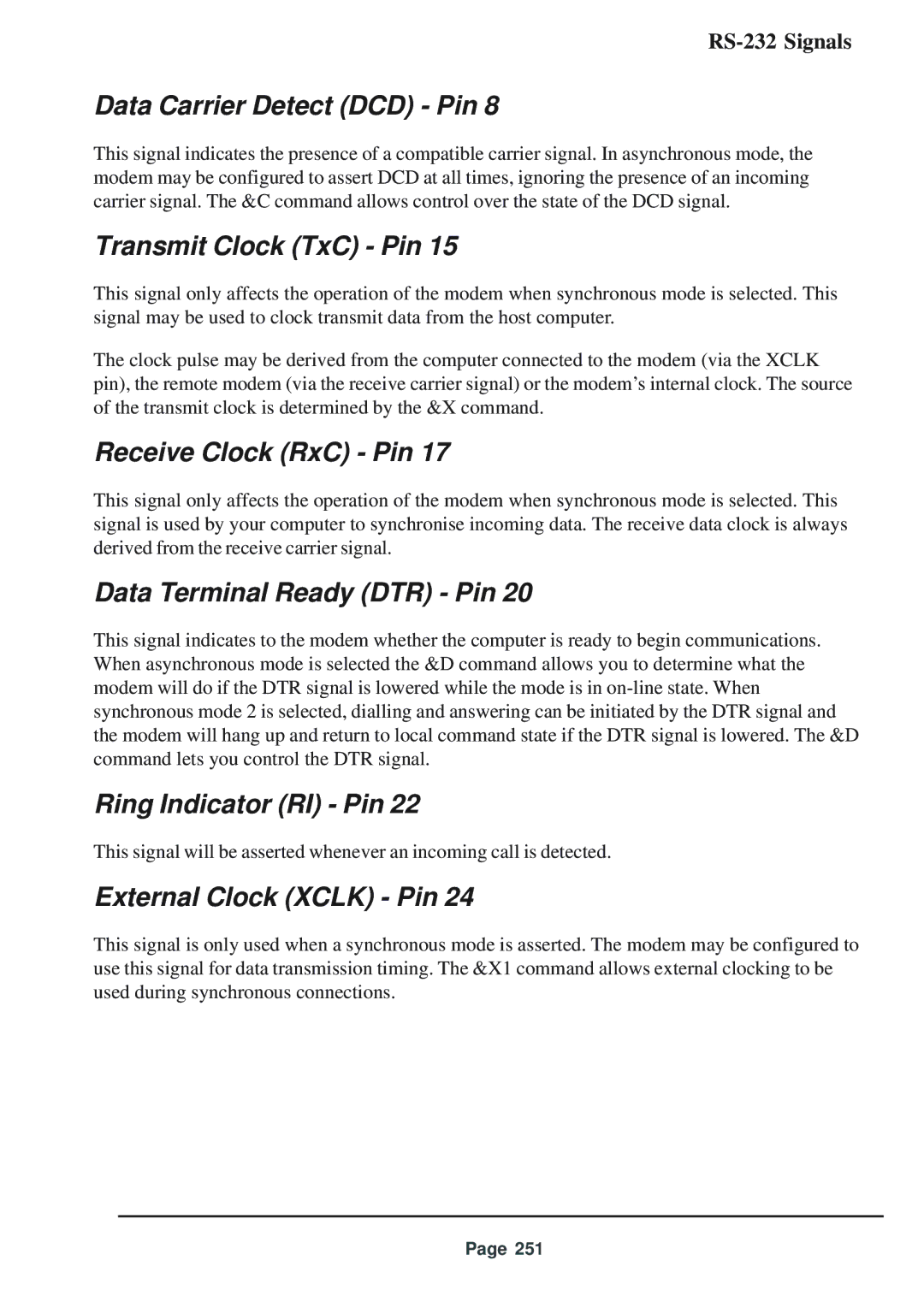Data Carrier Detect (DCD) - Pin 8
This signal indicates the presence of a compatible carrier signal. In asynchronous mode, the modem may be configured to assert DCD at all times, ignoring the presence of an incoming carrier signal. The &C command allows control over the state of the DCD signal.
Transmit Clock (TxC) - Pin 15
This signal only affects the operation of the modem when synchronous mode is selected. This signal may be used to clock transmit data from the host computer.
The clock pulse may be derived from the computer connected to the modem (via the XCLK pin), the remote modem (via the receive carrier signal) or the modem’s internal clock. The source of the transmit clock is determined by the &X command.
Receive Clock (RxC) - Pin 17
This signal only affects the operation of the modem when synchronous mode is selected. This signal is used by your computer to synchronise incoming data. The receive data clock is always derived from the receive carrier signal.
Data Terminal Ready (DTR) - Pin 20
This signal indicates to the modem whether the computer is ready to begin communications. When asynchronous mode is selected the &D command allows you to determine what the modem will do if the DTR signal is lowered while the mode is in
Ring Indicator (RI) - Pin 22
This signal will be asserted whenever an incoming call is detected.
External Clock (XCLK) - Pin 24
This signal is only used when a synchronous mode is asserted. The modem may be configured to use this signal for data transmission timing. The &X1 command allows external clocking to be used during synchronous connections.
Page 251
